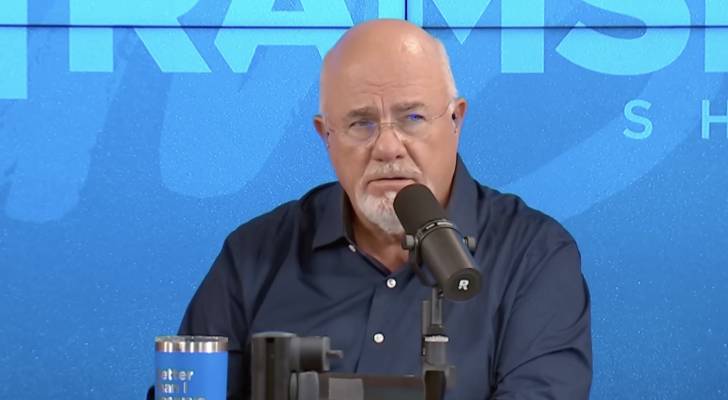Tom called into The Ramsey Show last week, sharing what he called “quite the financial mess.”
The 30-year-old former commercial real estate analyst from New Jersey is swimming in debt with four mortgages, a car loan, and a credit card — all to the tune of more than $1.8 million in debt.
Before being laid off seven months ago, Tom earned $130,000 annually in commercial real estate credit risk. Now he’s an Uber driver, which he told The Ramsey Show, “isn’t too great” an income.
His wife has a full-time job making $130,000 a year, but the couple worry about their financial future. Here’s more about Tom’s risky situation and what financial expert Dave Ramsey had to say.
Tom and his wife pay $4,400 a month toward the $540,000 mortgage on their home. Meanwhile, they have three rental properties which are more income strain than income stream.
On top of their principal residence, they pay a bundle in mortgage payments on their investment properties every month:
Read more: Do you own rental properties in the US? These 6 hacks can help you boost your income and lower your tax burden
That doesn’t include property taxes or home insurances. The couple are behind on those, and owe $6,000 in property taxes and face $1,000 in forced insurance.
Oh yeah, and they have a car loan and credit-card debt. The one bright spot is that they have $12,500 in emergency fund savings, but it can’t get them out of a hole this deep.
In desperation, the couple are now ready to sell off all their assets: the car, home and three rental properties, including the one Tom bought with a business partner. Tom told Ramsey he was close to selling it.
When Ramsey probed further, Tom revealed he was considering letting a buyer “take over” that mortgage.
“So you haven’t really sold the house. You just lease-purchased it to someone,” Ramsey said bluntly. “That’s a bad deal.”
Ramsey warned that could trigger the loan’s due-on-sale clause. Most mortgages come with a due-on-sale clause, which lets lenders call the entire loan due if you sell or transfer the property without their approval.
Story Continues
“You went into all these properties thinking there was no risk and the tenants were going to pay everything,” Ramsey said. “And you found out the more debt there is, the more risk there is. And you just took on a boatload of risk for no money.”
Ramsey said Tom was doing the right thing trying to sell all the assets and encouraged him to get a more reliable income stream with a full-time job.
So how do you know when you’ve crossed the line from savvy investor to overleveraged landlord? Here’s what the experts and lenders say.
While TV house-flippers can make it look easy, the financing rules tell a different story. The Federal National Mortgage Association (FNMA) allows borrowers to hold up to 10 financed properties as second homes and investment properties.
SparkRental, a landlord resource, notes that most banks get nervous once you hold more than four conventional mortgages. At that point, you’ll need stronger credit scores, larger down payments, and hefty cash reserves just to qualify for the next loan.
When it comes to affordability, most lenders rely on a simple yardstick: the 28/36 debt-to-income rule, which says that no more than 28% of your gross monthly income should go toward housing (mortgages, insurance, taxes) and no more than 36% should cover all your debts combined — including car loans, student loans and credit cards.
According to Bankrate, some loan programs stretch that ceiling to 43%, but investors playing it safe should stay well below.
Now imagine your household income is cut in half, whether through divorce, job loss or illness. The same rule applies, only the limits are cut in half. Suddenly, multiple mortgages that once looked comfortable could push your debt ratio into red-alert territory.
A common trap for landlords is thinking that rental income fully offsets your mortgages. In reality, lenders only count about 75% of projected rental income when calculating what you can afford.
And under Fannie Mae’s selling guide, that income can only be used to offset each property’s own costs and not to boost your broader cash flow.
Mortgage underwriters don’t just check income. They also want to see reserves, and according to Fannie Mae, typically six months of payments per rental property isn’t unusual once you hit five or more financed homes. That safety net becomes even more critical if you’re suddenly covering mortgages without rental income to back them up.
Owning rental properties can build wealth, but, as Ramsey advised Tom, the risks grow with every mortgage you add.
If your income were cut in half tomorrow, could you keep every loan current? If not, it might be time to slow down, build reserves or consolidate before you stretch yourself past the point of no return.
Tom’s story is a cautionary tale, but with realistic planning, risk awareness, and careful job hunting, it’s possible to get back on a solid financial footing.
Stay in the know. Join 200,000+ readers and get the best of Moneywise sent straight to your inbox every week for free. Subscribe now.
This article provides information only and should not be construed as advice. It is provided without warranty of any kind.

